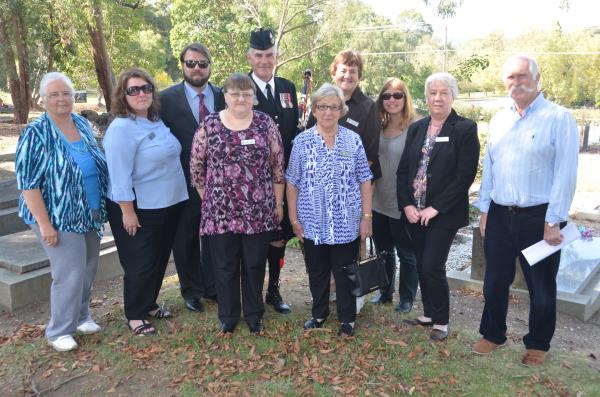
THEY set out, as they do, to find out a bit about district soldiers in the lead-up to the Anzac Centenary.
What members of the Narren Warren and District Family History Group found in their first venture in Berwick Cemetery astounded them.
It moved them as well. A few tears were shed as the stories of “our boys” came to light.
They found 100 people buried in Berwick Cemetery with links to the Great War.
Their first discovery was that Brigadier-General Cecil Henry Foott had lain there in an unmarked grave for the past 70 years.
Member Jane Rivett-Carnac said that discovery provoked many emotions among the six directly involved in the Berwick Cemetery Great War project.
She said their emotions went from shock and surprise to anger and they were determined they had to do something about the situation.
After discussion with Trevor Thompson from Berwick and Harkaway Cemeteries Trust, the group went to Chris McKenna at Berwick RSL.
“It took a few months and, thanks to the generosity of Alan Corsetti and Cameo Memorials, it was a thrill to stand in the sunshine at our local cemetery on Saturday 11 April and watch the unveiling of a fitting memorial to an officer and a gentleman,” Ms Rivett-Carnac said.
“The emotions this time tinged with a tear or two and immense pride that a man who served his country for 40 years was no longer forgotten.”
Writing “our Cecil’s” story last October and finding other references to the Great War among the local families was the beginning of the group’s Anzac project, so now each April on the Sunday before Anzac Day it will hold a Military Walk in a local cemetery.
“The initial thought and expectation was we might find maybe 20 or so men and produce a book,” she said. “It quickly became apparent that our local community lost many men during the First World War and that the men who returned had a story to tell that was just as interesting and important in the community as those who gave their lives.”
Group members identified 100 men, a sailor and a nurse with family connections to Berwick Cemetery.
“It was a surprise and each of us became attached to our boys and their stories.”
During research, they found it staggering that the military system of the day would write to a mother and ask her if there was anyone closer in kin (father or brother) than herself to send the medals of a dead son to.
They were staggered that so many local families watched as their only son or two three or four sons went off to war; that fathers and sons fought together; that at Gallipoli a brother wrote home and told of burying his brother at the Beach Cemetery.
They found stories of men wounded two and three times returning to fight beside mates.
“We expected to find boys putting their age up but not that we would find five men in their forties and a man at 56 who lowered his age to enlist,” Ms Rivett-Carnac said.
“We found glimpses of the hardship that the men faced on their return and we’re amazed at the stoic women that waited at home.
“We were equally surprised to find eight men returned with English war brides.
“It was interesting to ponder on why so many men who experienced the horrors of the Great War and the Depression years then went on to enlist in the next war. “
They have another puzzle to crack when the centenary activities subside.
“We found that a young man went to war, died after he returned home in 1921 and is buried in Berwick Cemetery with a Commonwealth War Graves headstone, however he is not listed on the WWI Honour Roll at the Australian War Memorial, nor is he listed on the Commonwealth War Graves list.”






